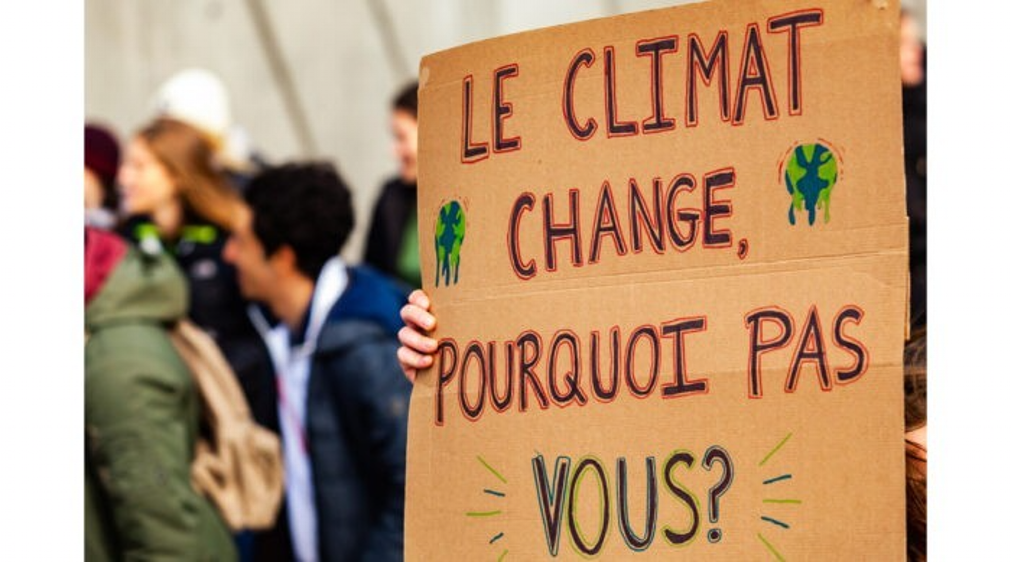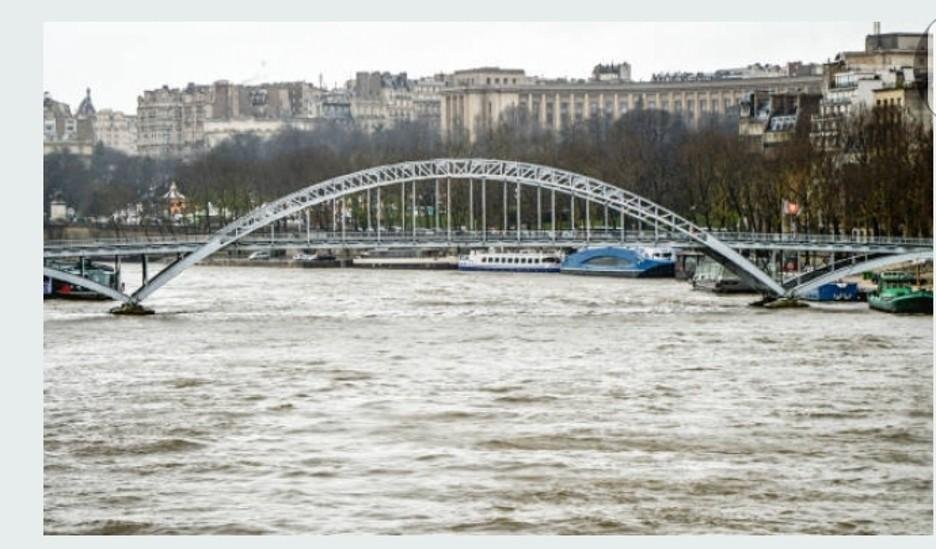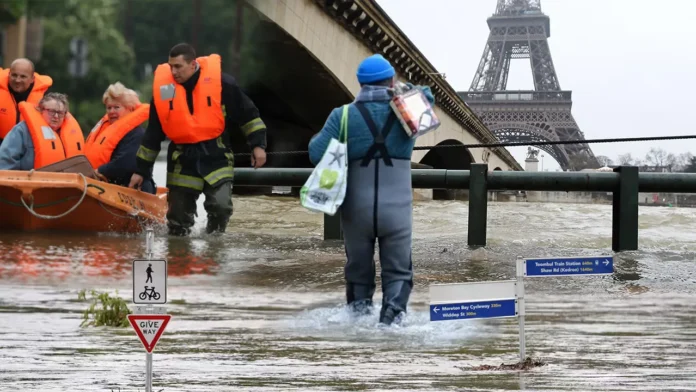Introduction
France has faced severe consequences from various global weather-related risks in recent years. Weather-related risks present significant challenges for countries, states, and communities by impacting their economic sectors. Climate change has led to numerous reports of damage caused by extreme weather situations in France. The nation”s vulnerability and population growth are contributing factors to the effects of climate change. Death records in France have been associated with heatwaves, floods, and storms, impacting the economy, agriculture, and fishing industries.
Weather-related risks pose challenges for the French economy through extreme weather events, economic disruption, infrastructure damage, insurance complexities, and resilience planning.
In this article, we will divulge the specific keys and their influence on the effect of weather-related risks in France and how they can be addressed through the various sectors of the French economy like Extreme weather events, Economic disruption, Infrastructure damage, Insurance challenges, and Resilience planning. We will also demonstrate how global leaders and activists have taken these impacts for the betterment of the nation, serving as a guiding factor for government policies in the country.
Economic Disruption Due to Weather-Related Risks in France

Scholars have shown that extreme weather can pull down the growth of a country economically, causing financial distress for the nation Economic Disruption is one of those effects. Over time, it has been revealed that economic losses in extreme weather increase. Weather-related Risk conditions are external factors that must be considered during climate change. Heatwaves, droughts, fires, floods, and storms are multiple threats that pose vulnerability to both human health and the environment, likewise, the financial losses to climate change have put a dent in the economic sector.
This has affected the economic effects of the supply and demand sides of the economy, including the destruction and interruption of vital property and infrastructure, a decline in labor supply and productivity, a decrease in investment and consumption, and a disruption of international trade. Crop yields have suffered greatly in agriculture, while the drought has resulted in “virtually no reproduction” for some amphibians and “low or abnormal reproduction” for waterfowl.ND-GAIN Country Index.
Infrastructural Damage In France Due To Weather-related Risks

Weather-related Risks have significantly impacted the infrastructure and ecosystem of French settlements due to storms, floods, and erosion. Countless infrastructures have been damaged due to the vulnerability of their equipment during heavy climates. The record heat such as flash floods, landslides due to heavy rain, rail buckling during heat waves, and fires due to droughts. These situations have made France vulnerable during such brutal circumstances. We confidently assert that addressing these risks is crucial to ensure the safety of French citizens and the stability of the French economy.
Insurance Challenges Adhering to Weather-related Risk In France

The increased frequency and intensity of weather events brought on by global warming will severely reduce local economic activity and depress asset prices which pose insurance Challenges. In addition to decreasing the value of financial assets, policies aimed at combating global warming may potentially cause the financial system to become unstable if the shift to a low-carbon economy occurs too quickly or too late.
For this reason, financial institutions are being urged by supervisors and central banks to swiftly put in place the internal mechanisms necessary to keep an eye on and reduce the risks. It was discovered that, despite some advancements, risk management procedures at financial institutions continue to only sporadically and only partially incorporate climate change. Comprehending the consequences of the climate shift necessitates integrating multiple analytical layers.
Resilient planning For Weather-related Risk

France has created several instruments and regulations to assist different industries in adapting to climate change resilient planning is a major factor.
During 1900, France’s temperature rose by 1.9°C, more than the global average for warming. This trend of rising temperatures is impacting patterns of energy demand; peak loads still happen in the winter, but more cooling degree days and increased market penetration of air conditioning could increase the demand for electricity for cooling in the summer. Average annual precipitation has also increased, with some regional disparities; average precipitation has increased in northern France but decreased in the south.
Additionally, heavy rainfall events are becoming more frequent in the Mediterranean region. France’s energy use is also impacted by its rising temperatures. The country’s electricity usage is extremely sensitive to temperature fluctuations, with peak loads occurring in the winter.
Precipitation is also one of the tribulations France goes through during climate change. Seasonality-wise, most of the nation has seen increases in spring and autumn rainfall, although regional variations exist in winter and summer precipitation. The reliability of the energy supply may also be jeopardized by the combination of rising temperatures and increased precipitation variability. National Climate Change Adaptation Strategy
Critics And Their Points of View About Weather-related Risk in France
The public is now taking extreme weather conditions and weather-related risks, as well as the brutality that comes with them, into consideration. A mask is moving through the streets, urging the country and world leaders to work together to promote resilience-promoting policies and put them into action on a global scale. Large numbers of citizens are participating in these demonstrations, which are no longer under the control of the government to uphold the peace and high standards of living of the citizenry.
Critics have also criticized how these demonstrations are being conducted domestically, arguing that they could spark major conflicts and disturbances between groups of people and increase the country’s democratic problems.
The minister for Europe and foreign affairs said: “France is rising to the occasion in responding to the emergency and showing solidarity.” Which stands as an encouragement to stand up to challenges.
Chrysoula Zacharopoulou: Former member of the European Parliament said “As I observed in Vanuatu, where we are implementing a “solutions diplomacy” with very practical results for our partners, sometimes difficult to perceive for those already living with the climate emergency daily. In northern India, we are assisting in the creation of an elite rescue unit to address floods linked to melting glaciers.”
Below is a YouTube link, to a video on what is going on in France, and how vulnerable they have been during climate change.
Conclusion
France is vulnerable to the cause of climate change, which includes the intensity of unpredictable changes in storms, an increase of temperatures due to the heat waves, and more intense rainfall that fortifies France’s expectations for economic sectors, and industry, tourism, and agriculture as well as to guide the country National Climate Change Adaptation Plan.
It is possible to achieve climate neutrality, but it will need a shift in the order of an industrial revolution. However, in contrast to previous industrial revolutions, this one will be faster, more global, and predominantly driven by public policy rather than markets and scientific advancements. The trade-off between growth and climate is not constant. Over time, reorienting technical advancement may even result in faster rates of green growth than fossil fuel-centered growth in the past or even in the future.
The decreasing cost of renewable energy points to the likelihood of this new kind of growth. Hopefully, there will be less climate vulnerability in France as time goes on, with improved mechanisms, and ecosystems.



